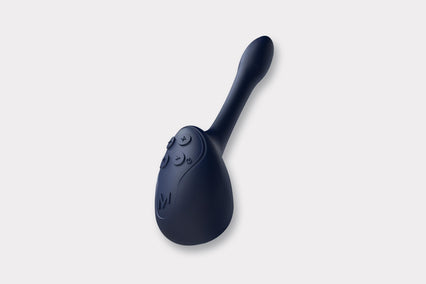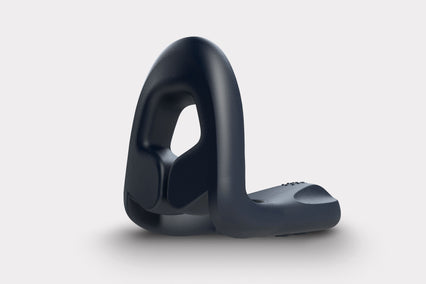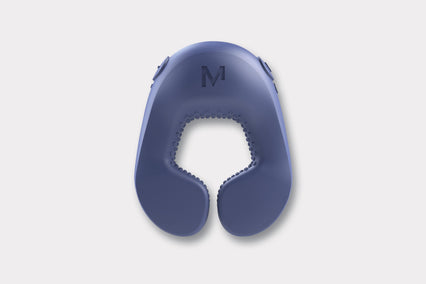The G-spot. Today, we know it as the X marks the spot of female sexual pleasure – some of us know exactly where it is, others long to know. So, why is this? Where exactly is it? Does it really, truly exist?
The G-spot was first officially observed by Eric Grafenberg, a German gynaecologist who had invented the IUD. Grafenberg had been researching the role of the urethra on female orgasm when he had noted “an erotic zone … on the anterior wall of the vagina along the course of the urethra’, which could produce intense arousal and orgasm in its owners when stimulated.
Bizarrely, Grafenberg was ignored until nearly 30 years later, a researcher called Beverly Whipple, who had investigated reports from women who believed they were urinating during orgasms uncovered Grafenberg’s research. She announced the discovery of the G-spot – which her contemporaries wanted to call ‘the Whipple Tickle’ – on American television in 1982.
Following the publication of Whipple’s book, ‘The G-spot and other discoveries about sexuality’, countless women and experts came forward to share their own stories and research of the ultimate pleasure zone. When pioneering sex educator Deborah Sundahal began to write and teach on the female prostate and the power and vigour of female ejaculation, something she claims any woman can learn to do, she reiterated Whipple’s directions to Nethernetherland – between 11 and 1 o clock at the front of the vaginal wall. What’s always been so fascinating about the G-spot is just how sure those that believe it exists describe experiencing it – as a deeper, richer, more engaging and engorging fuller climax.
By the time Whipple and Sundahl had opened up the discussion, what was now becoming clear was that some women were capable of getting intense orgasmic pleasure from an area that was not the clitoris. What was not clear were the exact dimensions, location and make-up of this area.
But in 2010, King’s College London researchers publishing in the Journal of Sexual Medicine decided to go for an O marks the spot once and for all – by experimenting on sets of twins whom it was presumed would share an identical anatomy and thus be able to prove the G-spot’s location once and for all.
The findings were confusing. Most of the pairs of twins in question did not report both having a G-spot. What the researchers did find, however, was that having a G-spot was positively correlated with being open and extroverted, and that younger women and those substantially more fulfilled in their relationships were also more likely to state they had been touched there. But could it really be true that the G-spot existed more in the head than in the genitals? When had men ever been taught anything comparable about their penises?
Interestingly, it took a male scientist to pinpoint it. Publishing research in the Journal of Sexual Medicine, Professor Dr. Amichai Kilchevsky was unequivocal: “Without a doubt, a discrete anatomic entity called the G-spot does not exist”.
But it wasn’t quite the end of the super-orgasmic road. The G-spot might not exist, Kilchevsky elucidated, but increased sensitivity in the vaginal anterior wall certainly did. Which meant those intense orgasms women were reporting as a result of the g-spot were certainly not imaginary – they just weren’t related to any distinct anatomical part but a whole, luxurious region.
Today, Kilchevsky is one of several scientists, including a team at University L’Aguila and Australian urologist Helen O’Connoll, who consider it more accurate to describe the G-spot as an extension of the clitoris. G-spot orgasms are now believed to come from the Clitoral Urethral Vagina complex (CUV), the clitoris being composed of ‘bulbs’ that stretch up along the walls of the vagina, with the clitoral glands being full of nerve endings and receptors that reach down to the base of the vulva and up around the urethra.
So if the region is so vital, why has it taken so long to understand and identify it? We know that masturbation techniques are only just being investigated. Is it taking it too far to see the denial of the G-spot as a patriarchal rouse to deny women their full orgasmic potential?
Not entirely, says Dr O’Connell, who told the BBC back in 2006 that the visibility of the penis has made it the object of scientific attentions, with little comparable research done on female genitalia until much more recently (we owe O’Connell the discovery of just how extensive the female pleasure zone really is.)
And perhaps it’s the matter of visibility that might give us a clue as to why we’ve so struggled to identify the G-spot either way, and to why some women struggle to feel aroused from stimulation of the CUV, despite more consistent scientific evidence to its existence.
Unlike men who know they are physiologically aroused by sight, women have to learn to interpret subtler, internal sensations – and they don’t always get them right. A study done by Meredith Chivers of Queen’s University which found women regularly misreported their own physiological arousal would support that.
And that, in turn, might explain why even twins brought up to share the same attitudes to sex and their bodies don’t consistently report their belief in the existence of their own G-spot. After all, arousal isn’t a straight-forward case of mind feeling free plus body touched in a certain way = desirable pleasure outcome. Otherwise we’d surely have got to the bottom of the G-spot mystery at least before Charlotte and her rampant rabbit on Sex and the City did.

So what’s the conclusion? Well, that the CUV region does exist, and that many women experience pleasure from being stimulated there – but not all do. The fact is, we’re only just learning about the depth and breadth of female arousal. Pinning it all on a single mystery spot rather seems to be spoiling the magic.















































